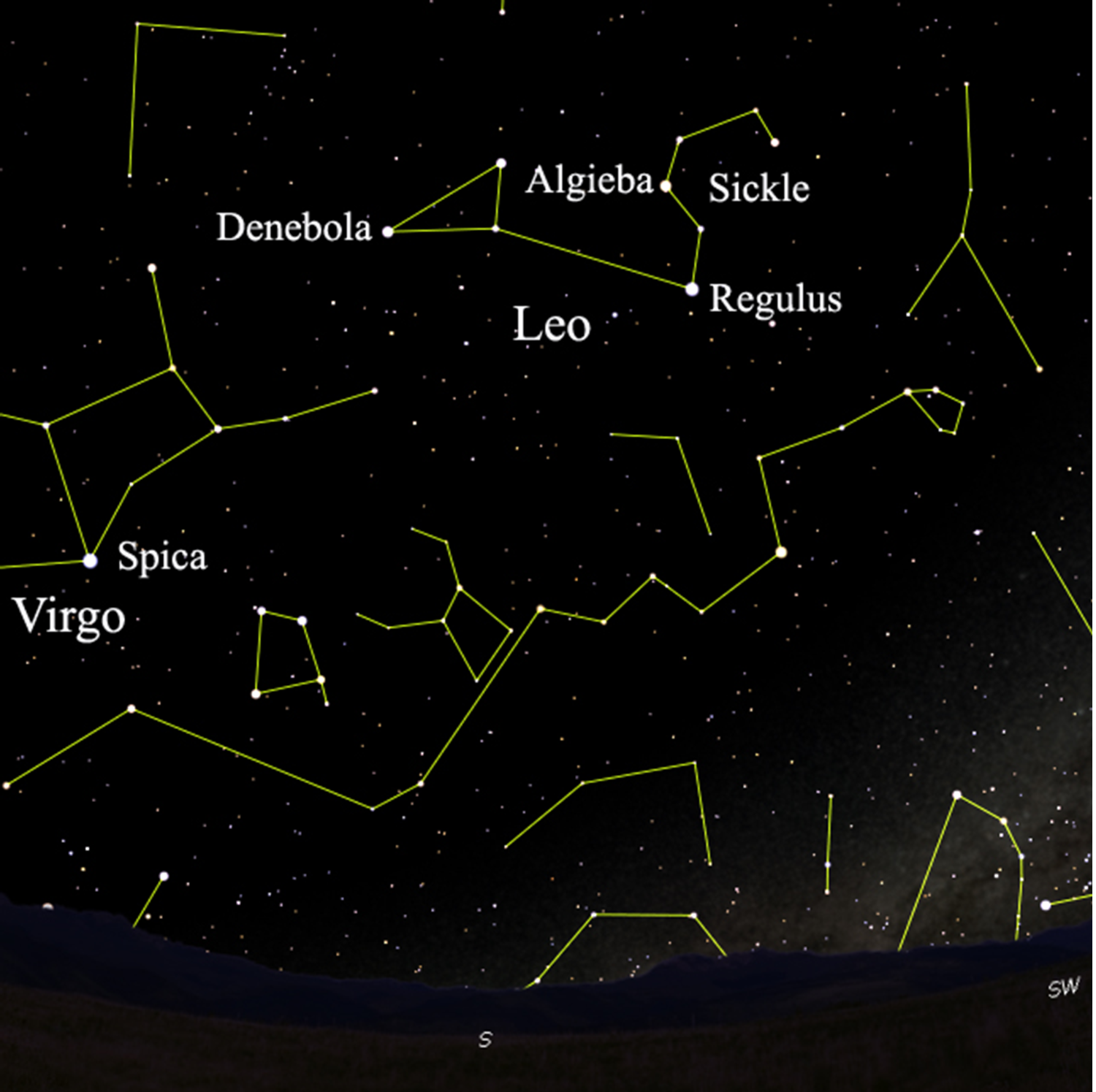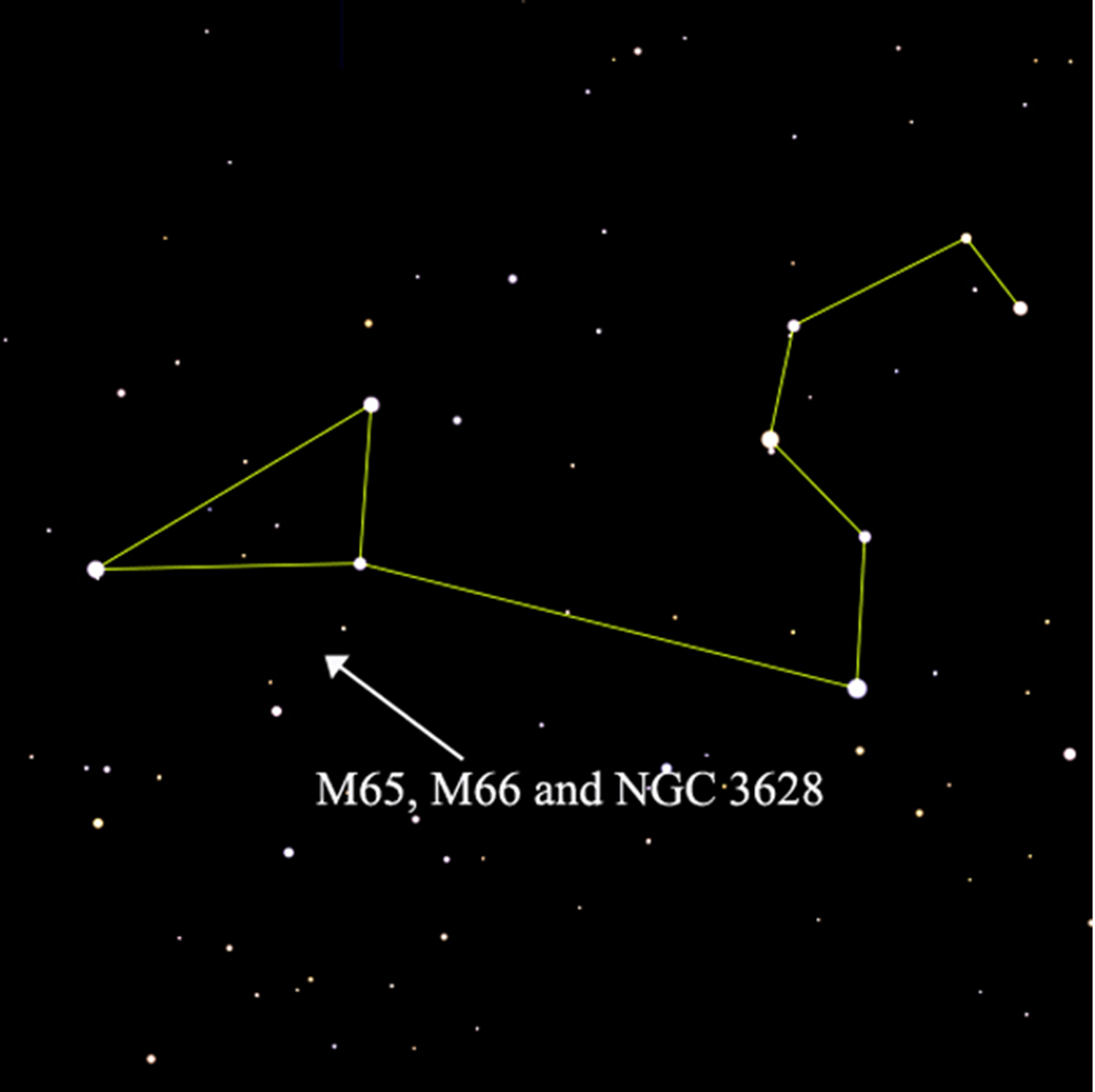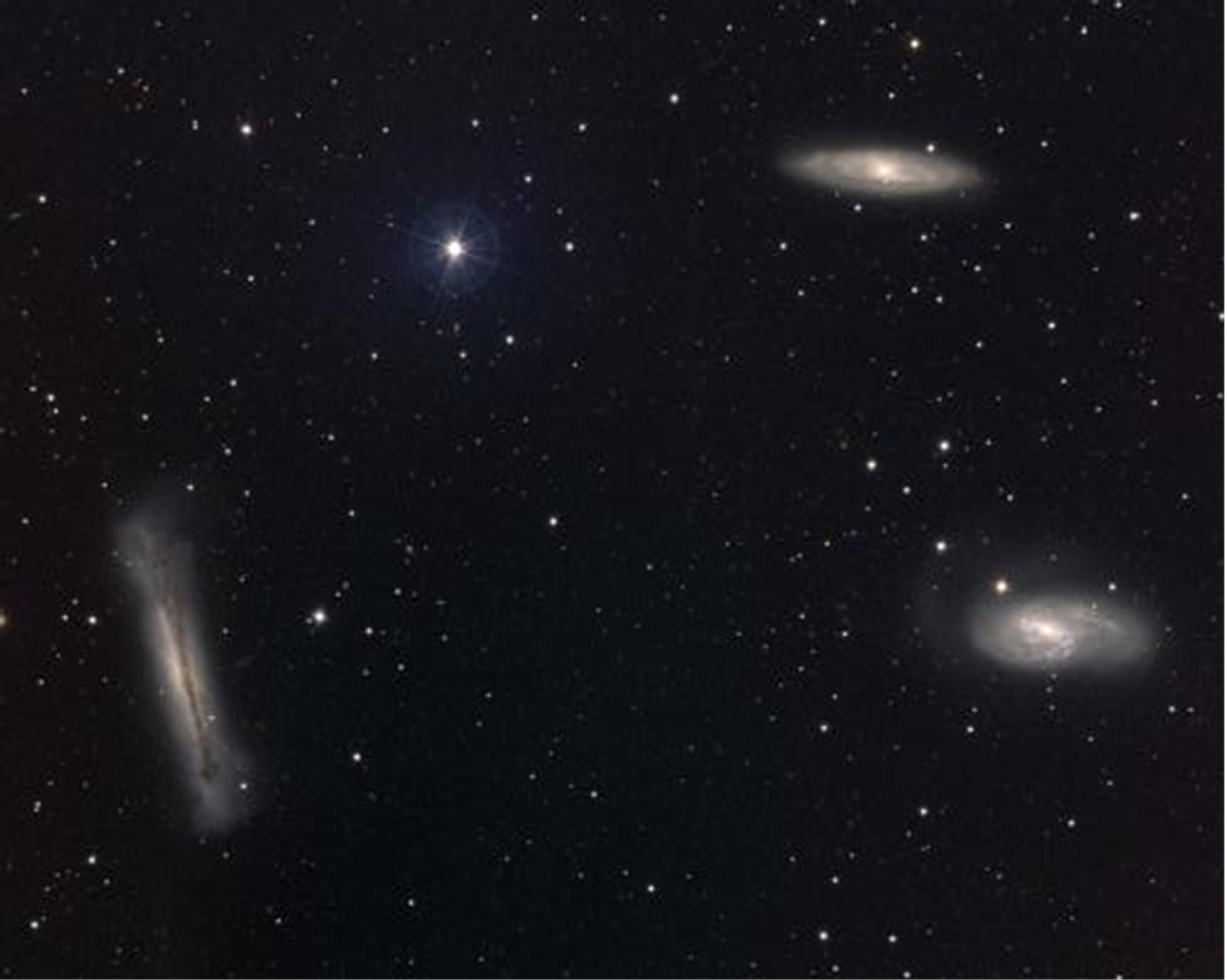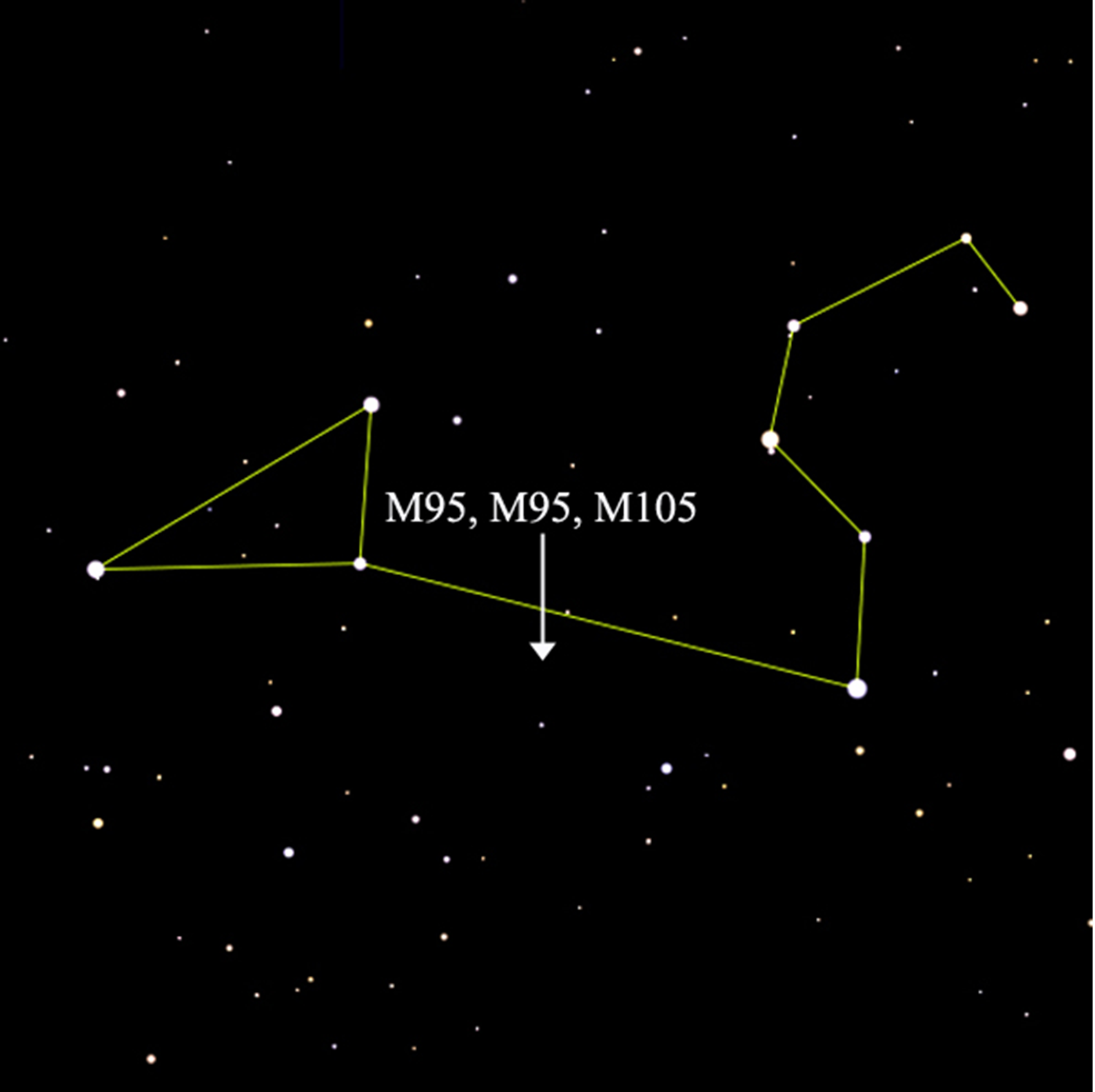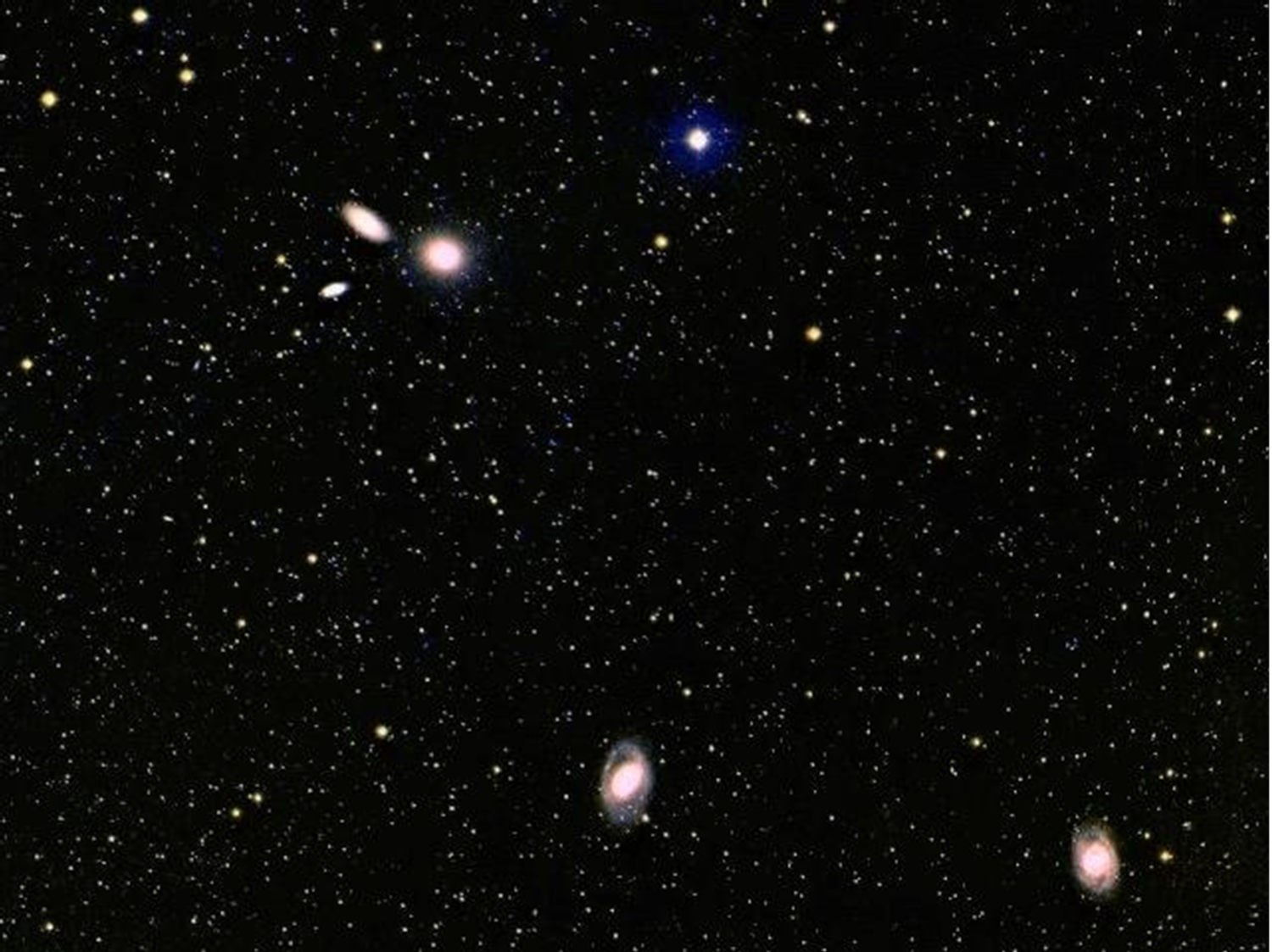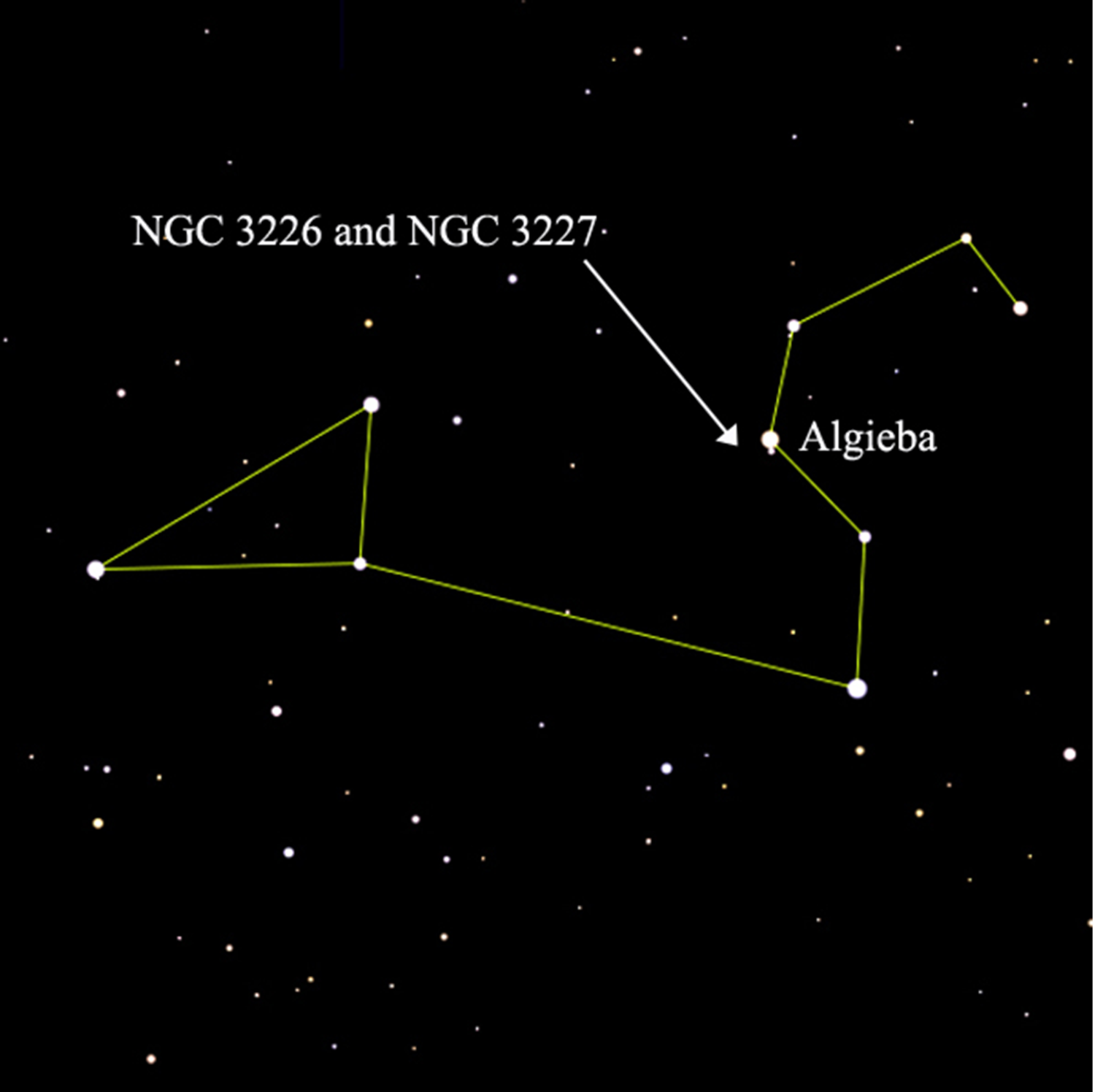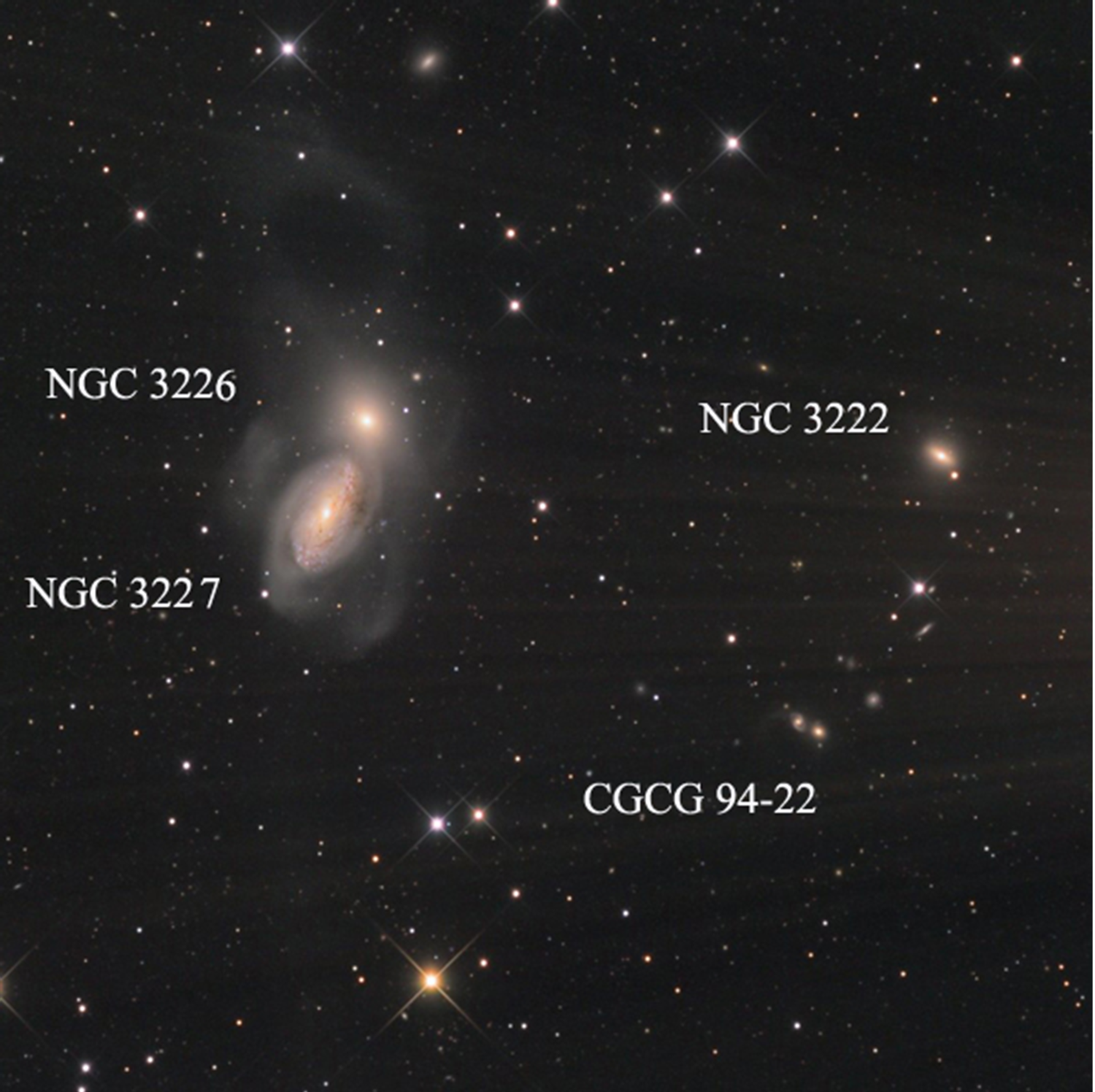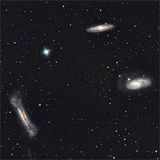
As spring begins, Leo is transiting due south in the early evenings, and presents us with some interesting bright, and not so bright, galaxy groupings. These can, for the most part, be viewed from a reasonably dark sky, in instruments as small as four inches. Of course, some will require larger optics, but that should serve to interest you in joining other amateur astronomers observing, getting away from light polluted skies, and seeing just what there is to see. Let's begin.
The image above shows our early April sky, two hours after sunset. Looking mostly south-southeast, you'll find bright star Spica in Virgo. Above it to the south is the constellation Leo, marked by its brighest start, Regulus, which anchors the Sickle asterism. In The Sickle is the fine double star Algieba. Leo's back haunches are punctuated by the star Denobola. We will use these stars to locate three galaxy groups.
M66 is the brightest at magnitude 8.9, 36 million light years from us. M65 shines at magnitude 10.25, and along with NGC 3628 is 35 million light years from us. The three are gravitationally bound - as evidenced by their proximity to each other and distance from us. NGC 3628 is a challenge object at magnitude 10.26, appearing dimmer due to its large angular size - and to my tastes the most interesting due to its distorted appearance.
In deep images of the group, NGC 3628 shows a tidal tail about 300,000 light years in length. This is material streaming out of the galaxy as it moves through space, presumably the result of gravitational interaction with the two other members of the group. Here are images of the three together, courtesy of NOAO:
Can you tell which is which based on what you've read, and why NGC 3628 has been nicknamed "The Hamburger"?
Let's move to the next group in Leo - M95, M96 and M105.
Located just below and a bit over two-thirds along a line described from Regulus and the star used to hop down to the Leo Trio, this group of three galaxies - M105, M95 and M96 (the M96 group) is visible in a single binocular field of view.
All three galaxies are in the 10th magnitude range, varying in distance from 31 million to 36 million light years from us. The group also includes a few dimmer members surrounding M105. M95 and M96 were discovered by Charles Messier's protégé, Pierre Méchain, in 1781. M105 was added to the Messier catalog by Helen S. Hoag, after she found reference to it in a letter from Méchain referencing it. Here is how they look in a single image:
M95 is at the lower right, with M96 to its left. M105 is the roundish glow upper left, and nearly as bright is NGC 3384 - the elongated glow to its left. NGC 3389 will be the challenge object of the group, significantly dimmer at mag 12.4. The Messier members of this group will all be visible in a 4 inch telescope, as I expect NGC 3384 will be as well. NGC 3389 has been reported visible in a six inch telescope - maybe you'll give it a try in something smaller and let me know if you find it. Image is courtesy SEDS, Arizona.
The third grouping is an esoteric one. NGC 3226 and NGC 3227 are a pair of brighter galaxies with dimmer ones in the same field of view. The brighter pair are part of astronomer Halton Arp's Atlas of Peculiar Galaxies. NGC 3226 is a dwarf galaxy, paired and interacting with the spiral galaxy NGC 3227. These are very easy to find - next to the beautiful double star Algieba (Gamma Leonis), which you should pay a visit to on your way to these galaxies.
Here is how the pairing appears, although it will not appear photographic in your telescope like this image:
I've read one report of viewing the brighter pair in a 102mm telescope, but all other reports are in 8 inch or lager instruments. NGC 3227 is almost 66 million light years distant, and shines at magnitude 11.28. NGC 3226 is 70 million light years from us, shining at magnitude 12.3. If you can pick up those two, try for NGC 3222 - dim at mag 13.7, and an amazing 232 million light years away.
Want more? Here's the tough one: CGCG 94-22 (Catalog of Galaxies and Galaxy Clusters) is a tiny speck, a multiple galaxy system, shining at magnitude 15.4. This pair of galaxies is 595 million light years from us! Thanks to Bob Frankel for this beautiful image showing the tidal interaction between the large galaxies, and even hints of such in the tiny pair. You can easily see the "dance" the galaxies have been doing together by the trails of material around them. If you're wondering what the rays are from the right side of the image, it's the brilliant double star Algieba. Here is the original image on Bob's website.
I'm eager to hear from some of you who try hunting for any or all of these targets. The brightest members offer quite a bit of detail. I personally love The Hamburger, as it is visible without much work, and is an unusual target. The dimmer stuff? well, icing on the celestial cake.
Going galaxy hunting in Leo? Come back and leave a review of this article, and let us know what you used to find them, and which was your favorite.
Clear skies,
Mark
Mark Wagner is a life-long astronomy enthusiast and deep sky observer. He has spent the past twenty years popularizing amateur astronomy in the San Francisco bay area through his writing and community building. A past president of the San Jose Astronomical Association, he founded what is now the annual Golden State Star Party in California. Please post if you have comments, questions, sketches or images you've taken of the targets mentioned above.




